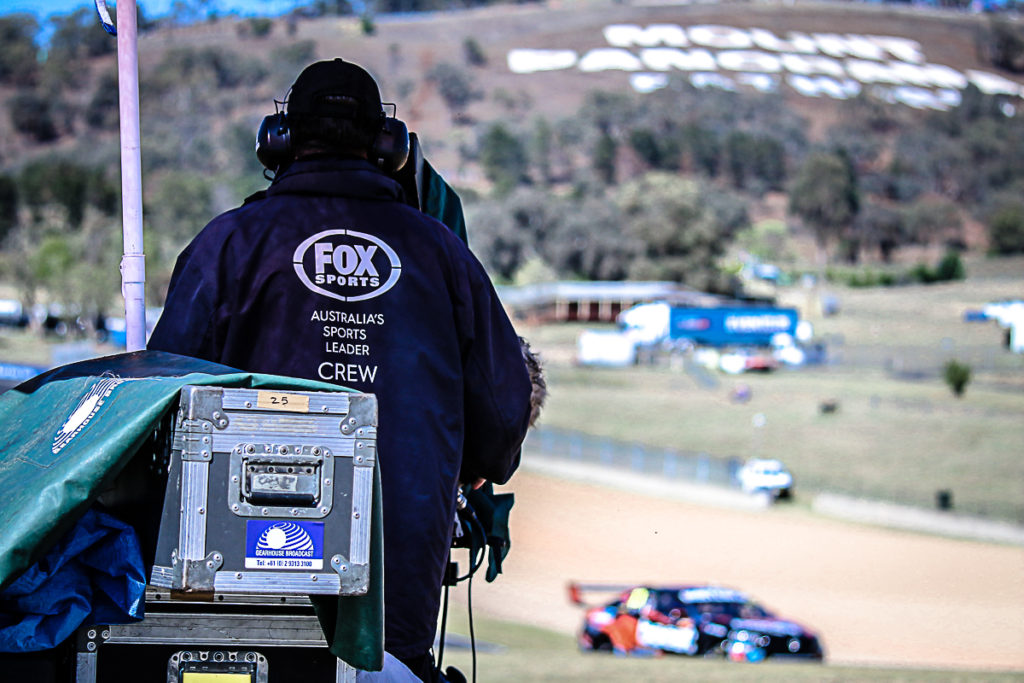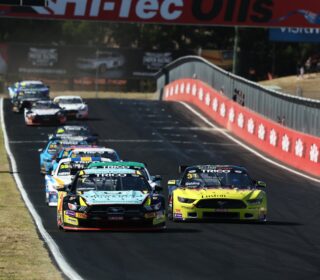INSIGHT: HOW MANY WATCH VASC DIGITALLY?

ONE OF the most commonly asked questions of the current world of broadcasting is: how many are watching online? The Race Torque investigates.
WORDS: Richard Craill IMAGE: Mark Walker
THE increasingly fragmented broadcast market means people have more than just one way to consume their sport these days.
The traditional forms of linear broadcast or subscription TV are being gradually replaced by on-demand applications for mobile devices that allow people to watch what they want, when they want.
The problem is, in the current market those particular applications are not measured by ratings agencies, nor are their viewing figures generally released by the companies themselves – mainly because compared to traditional broadcast models the numbers are still tiny.
However there’s no doubt that is the future of sports coverage as fans seek to consume content when, how and where they wish rather than being locked into sitting on the couch in front of the TV.
We’ve already tracked a visible improvement in the digital uptake of the BP Supercars All Stars eSeries during the Covid-19 shutdown, with decreasing Fox Sports numbers offset by a growth in those consuming it via Facebook, YouTube, Twitch or other mediums.
TRT has been tracking the Supercars’ ratings since the start of the 2019 season via our Ratings Watch column and the most commonly asked question is ‘Great, but how many watched on Kayo?’.
KAYO SPORTS
Kayo Sports was introduced by Fox Sports last year to provide an OTT (‘Over the Top’) streaming platform for their premium sports products.
Basically, it was an alternative to those who didn’t want to go all-in and spend the money on a full-on Foxtel Subscription.
Because they are not monitored in the same way as traditional terrestrial or subscription TV, there is no way to know how many people are watching Supercars via Kayo relative to those watching on Fox Sports or Channel 10.
But thanks to the fact parent company News Corp regularly releases their financial performance, we can at least take a stab at working it out.
It’s worth noting, this analysis is based on numbers gathered at the conclusion of the 2019 season – it does not take into account the decline registered since people began belt-tightening efforts when the Coronavirus and subsequent lockdown struck.
THE STATS
Documents released by News Corp confirmed that at the end of 2019, Foxtel had just under 3.1 Million Subscribers, split between their traditional broadcast service (approximately 2.23 million people), Kayo Sports (430,000) and Foxtel Go, their online version of the traditional Foxtel service (385,000).
There is some crossover between people whom have both, but we don’t know those figures and as such won’t take them into account – but accept there’s some fluidity to these figures.
These numbers, when combined with OzTam (the ratings monitoring agency) viewership figures released daily, are handy because it gives us a chance to work out what could pass for an approximate percentage of subscribers watching Supercars.
The theory is that should then translate into the digital properties as well, giving us an indication of the extra number of people watching via Kayo Sports or Foxtel Go.
The average Fox Sports audience for Supercars races in 2019 was 171,900 per race, which equates to 7.5% of the total ‘traditional’ Foxtel Subscriber base of 2.23 Million.
Bigger races have a higher share: the record-smashing Bathurst broadcast last October drew an enormous 469,000 people on Foxtel, a massive 20.27% of the total subscriber base. That’s a big chunk of the audience.
We’ll remain with the season average for a moment, however.
Based on the fact that on average 7.5% of Foxtel subscribers tune in for Supercars every week, we can work on an assumption that a similar percentage of those with Foxtel Go subscriptions will do the same.
Which means we can reasonably assume that an average audience of just under 29,000 watched each round on the Foxtel Go platform, potentially spiking to 72,000 for Bathurst.
Still with us? Great. It gets more complicated from here.

KAYO IS DIFFERENT
KAYO, obviously, is targeted at sports fans only so the percentage of audience viewing on that platform is likely to be substantially higher.
We’re operating on the basis that an average audience comprised of 20% of the 430,000-odd Kayo Subscribers – which equates to 86,000 – would have taken in at least some Supercars action via the platform in 2019.
Why 20%? We’ve come up with that number based on the total TV audiences for AFL, NRL and Cricket last year – the three big sports.
Working on the basis that if 25% of Kayo Subscribers are there for AFL, Another 25% are for NRL and the same are there for the Cricket, Supercars will be next best.
There will be plenty of viewer ‘spill’ between all the codes (lots of footy fans love their motorsport, too) so we settled on just under a quarter of the total audience, on average.
That maths holds up when you compare it to the numbers we do know.
The Cricket World Cup audiences released by Kayo in September last year showcased the kind of numbers achievable – ticking over 220,000 viewers for the best matches.
Just under half of their subscribers watched a major, international event featuring the national team.
It’s hard to believe that many watched Queensland Raceway’s Supercar round on Kayo, but Bathurst – given it’s massive share on regular Subscription TV as well? Absolutely.
What’s more, Kayo reported that 75,000 users watched the 2019 German F1 Grand Prix on the application which given it’s 10:30pm start time is impressive. So we’re backing our Supercars numbers and, if anything, they could be on the conservative side.
Yes, it’s rough. Don’t @ us – we had to start somewhere and this makes the most sense.
SUMMARY
OKAY, so the figures are rubbery and the maths may be way off – but we’ve had a crack.
We’re going to go on a limb and say that an average digital audience of approximately 125,000 watched each Supercars round online last year.
It is a substantial number: taking the average round broadcast from 180,000 to over 300,000 and adding 1.8 million to the cumulative season audience of 5.8 million.
Bathurst goes even higher. By our reckoning, more than 250,000 could be added to the already large existing totals.
Even if those numbers are on the high side, it’s a notable and worthwhile addition to the broadcast stats, regardless.
OVERSEAS?
LAST YEAR, Forbes.com reported that 172,000 unique ‘streamers’ watched some part of the 2019 Daytona 500 on mobile devices – up 52% on the year before, while the following race at Atlanta was up 48% to just over 84,000.
Given the TV audience for the ‘500 this year was a tad over 9 Million, those numbers do seem small, especially compared to the numbers we are presenting for Supercars’ digital-only audience here – however it’s worth noting the substantial difference in TV markets here and there.
It is reported that more than 180 Million US people have access to a subscription (‘Cable’, in American) service, which is 55% of the total population.
Foxtel reports that approximately 7.7 million Australians have access to their product, approximately 32% of the total population.
So, a significantly higher percentage of people in the US have access to races shown on cable, meaning the requirement, or perhaps more accurately the demand for a digital offering, though growing, is still smaller in the USA than it is in Australia.
Which means their level of digital participation is potentially but understandably lower than ours, with our lower take-up of ‘cable’ TV and a history of free-to-air providing most of what people want to watch.
Still, we’re confident that the numbers behind this story hold up and the total audience will be somewhat similar to what we have quoted.
What does it mean? Broadly, it shows that there is value in having a digital product. An extra 100,000 people watching per race is not a small figure and adds a meaningful percentage to the total audience – which is excellent for the sport.
It’s also proof that the traditional ways of broadcasting a sport are gradually being eroded by digital offerings.
While the next TV deal may not have a more significant streaming component to it, then the one after certainly will.







